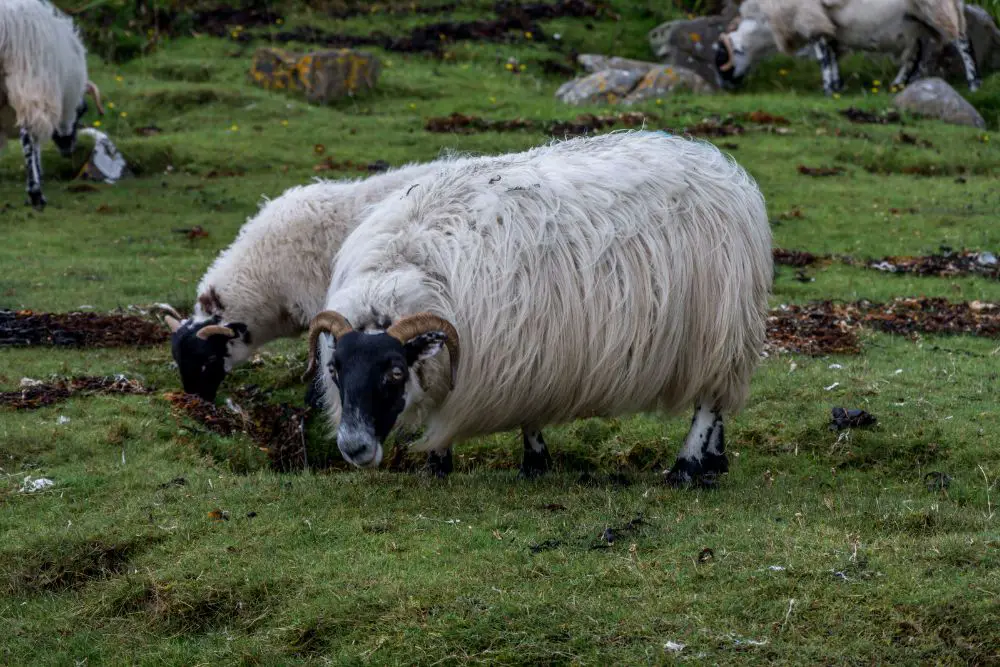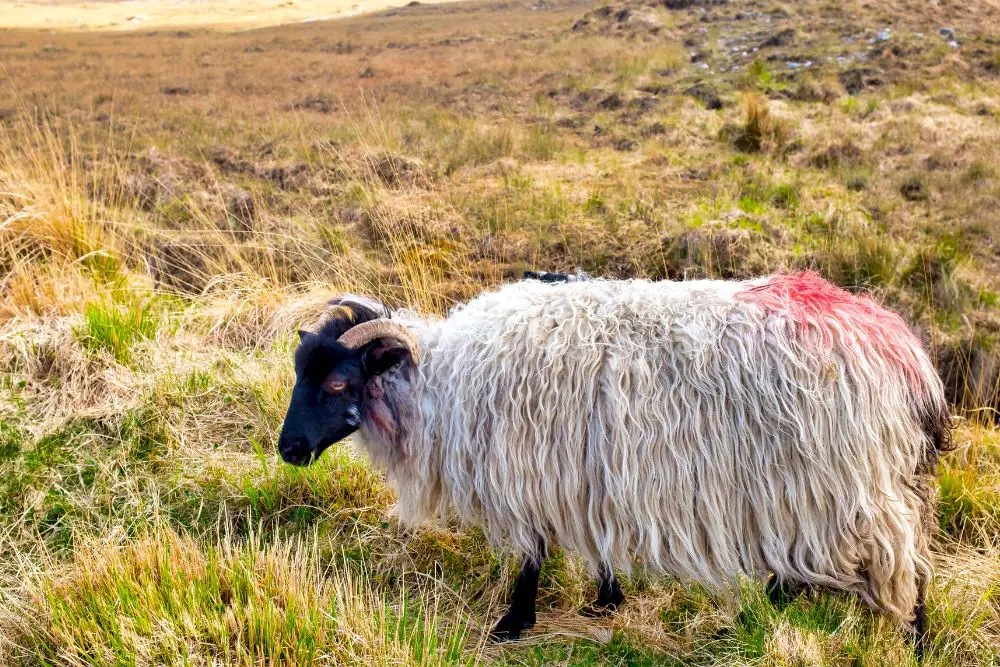The origin of the Blackface breed of sheep is shrouded in mystery but this distinctive sheep can be found in large numbers throughout the United Kingdom and has been used for both meat production and wool for the past six centuries.
Blackface sheep have come to play an integral part in the sheep industry throughout northern Europe and are known for their hardiness, wool and meat quality, and characteristic appearance.
Table of Contents
Where Does The Blackface Sheep Come From?
The Scottish Blackface sheep (Ovis Aries) is thought to be from the Scottish Highlands, however they were not introduced to this area until the 18th century. Prior to that they were found along the border between Scotland and England. They are the most popular of the blackface sheep breeds.
It is theorized that these sheep first immigrated from Asia and may have descended from Argali mountain sheep, though the records of their importation have not been found in recorded history.
The first record that we know of comes from the 12th century and was uncovered in a monastic text that spoke of “dun-colored sheep”. These sheep provided wool which was used to make clothing for the religious order.
It wasn’t until the early 1500’s when King James IV from Scotland purchased 5,000 of these Blackface sheep to graze upon royal lands that this breed was found in modern historical records. The sheep were originally called Linton sheep and the population grew with their popularity.
In the 19th century, these sheep began to spread throughout the United Kingdom. and were first imported to the United States. As these sheep migrated to new areas, they began to be bred for different characteristics.
Within the Scottish Blackface sheep breed of today, there exists three distinctive types of sheep:
- Perth: This blackface sheep is found primarily in northern Ireland, southwest England, and northeastern Scotland and is closely related to the Kerry Blackface sheep. It is a large sheep with long and heavy wool. Perth rams are strong, hardy, and produce lambs that weigh upwards of 88 pounds.
- Lanark: Found throughout Ireland and Scotland, the Lanark is smaller than the Perth, and has shorter fleece. They have been crossbred with Newton Steward sheep to increase their hardiness, and milk production.
- Northumberland: This sheep is found primarily in northern Great Britain, and has incredibly soft wool. Northumberland ewes are often used in breeding programs for their mothering instincts.
While not closely related to the Scottish Blackface, there are other sheep breeds that may be mistaken for Scottish Blackface sheep including: Romanov sheep, Welsh Mountain sheep, Blackhead Persian sheep, Suffolk sheep, Hampshire sheep, Shropshire sheep, Dorset sheep, and Valais Blacknose sheep.
The Blackface Sheep Breeders Association was founded in 1901 and does not promote all blackface breeds, but rather continues to promote the Scottish Blackface sheep breed of today.
Scottish Blackface sheep have maintained popularity throughout Europe, and parts of New Zealand though they are considered a rare breed in North America.
Blackface Sheep Breed Characteristics
| Characteristics | Description |
| Origin | Scotland |
| Appearance | The Blackface sheep is a primarily white sheep with a contrasting black and white face. It has long, all-white, coarse wool, with long legs and excellent conformation. Both rams and ewes have sizable horns, and are strong, with high vigor. As meat production breeds, they have low fat to meat ratio, with a deep chest, and well sprung ribs. |
| Wool | Micron range from 28 to 38 Staple length between 10 and 14 inches Grease fleece weight of 5 to 6 pounds |
| Weight | Rams weigh between 150 to 175lbs Ewes weigh between 115 to 130lbs |
| Fertility | Relatively easy lambing and mothers will fight to protect their young |
| Meat | Fast-growing and mild tasting |
| Environment | Does best in mountainous terrain |
| Common Uses | Primarily wool production |

What Kind Of Fleece Does Blackface Sheep Produce?
While Blackface sheep are primarily used as meat production sheep, they have a double coat and fleece that is capable of producing a wide variety of products.
Their wool is often used in crafting rugs, stuffing for mattresses and tweeds that are used for making high-quality suits and upholstery.
Their fleece is popular with artisans and crafters who enjoy weaving, felting, and spinning due to the lovely length and texture. It makes a durable yarn that takes to dye well.
Why Should I Raise Blackface Sheep?
There are many reasons why you should consider raising Blackface sheep on your farm:
- One of the hardiest breeds in the world and can withstand harsh, cold weather
- Fast growing lambs are good for meat production
- Do best on hillsides and mountains
- Can survive on low-quality foraged grasses
- Resistant to most disease
- Ewes make wonderful mothers and have easy lambing
- Ewes are protective of their young and will fight to defend against predators
- Highly intelligent breed

